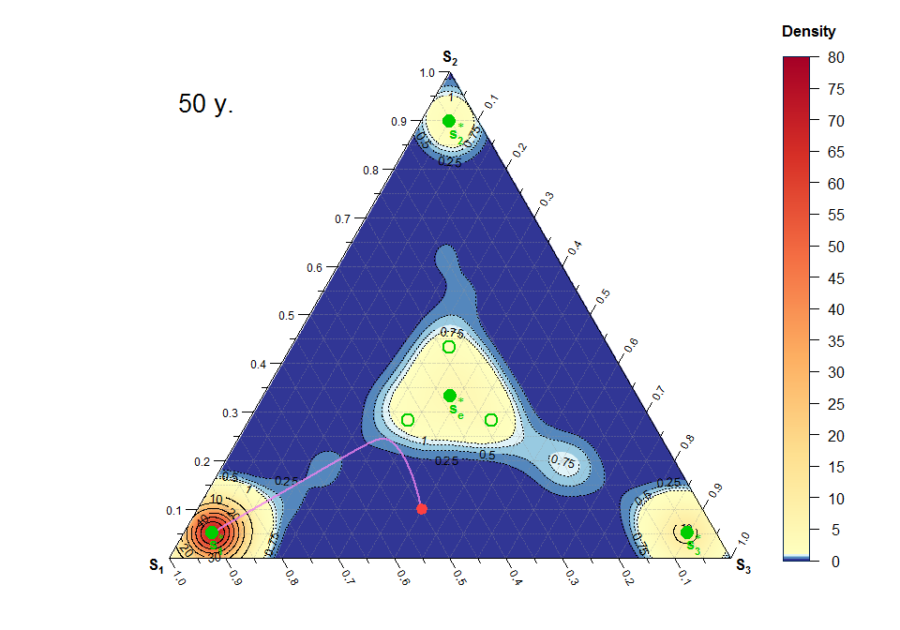Tuesday 21st of January, our fourth Quadtrees Hub will take place. The aim is to share and discuss research in progress. Quadtrees’hubs are open to anyone interested and somehow familiar with some quantitative techniques and willing to progress with these. Please contact Isabelle Pigeron-Piroth for information.
When? 21st of January 2019 14h-16h.
Where? Map Room (next to GIS room) 1st floor MSH, Belval.
14h-15h : Justin Delloye (LISER) : A mathematical approach of residential migration dynamics
The spatial distribution of a regional population, the residential pattern, is an important topic for public authorities because it is related to concerning issues such as access to housing or sustainable commuting. Its evolution is essentially driven by residential migrations, which form a complex dynamic system because of the feedbacks between residential migrations and residential patterns. To handle this complexity, researchers usually rely on numerical simulation tools such as agent-based models or cellular automata. However, these methods still suffer from a few shortcomings among which calibration and validation issues, as well as biases due to discrete time steps.
In this talk, I present a mathematical model of residential migrations that can complement current numerical approaches by addressing these calibration, validation and temporal issues. The model is presented with two applications. First, an individual model of residential migration is built, which reconciles previous stochastic representations of dynamic spatial interaction models by introducing an endogenous “decision rate” parameter. This parameter is then estimated using Belgian residential flows in 2005. Second, the individual model is aggregated to express the evolution of a residential pattern as a Markovian system. This aggregation procedure is then used to study the structural properties of a traditional core-periphery model of economic geography.
15h-16h : Brano Glumac (LISER) :What are the housing needs and solutions for the households with frequent residential mobility patterns? A qualitative systematic review
The objective is to generate the transdisciplinary conceptual framework capable of sketching the attributes of flexible housing solutions and their benefits to households with frequent residential mobility patterns.
Residential mobility has an impact on available housing solutions and vice versa. Frequent residential change is potentially a useful marker for the household financial danger and lack of wealth accumulation via classical property tenures. Thus this systematic review supports the enlargement of housing solutions by generating and exploring a framework to support these residentially mobile households for whom lack of means for wealth generation may be identified. Therefore, a primary research question asks what are the housing needs and solutions reported in the literature that should suit households with frequent residential mobility patterns. Followed by a secondary question; what are the attributes of the identified flexible housing solutions?
Narrative and framework synthesis were used consecutively to generate and explore the conceptual framework of flexible housing. Both are qualitative synthesis based on configurative synthesis within a purposive sampling framework approach. This approach is the best suited to generate new emerging concepts. The first step of framework synthesis approach provides an answer to a broader question of the housing needs for the population with frequent mobility patterns. The second step identifies the attributes of the non-exhaustive list of the interventions. Searching for studies adopts a purposive sampling framework (author identified three groups of housing interventions or solutions for residents with high mobility pattern: technical, service-based and institutional) based on an existing body of literature. Studies that investigated international migration for asylum were excluded. Two reviewers assessed each study using quality criteria with particular attention to the consideration of bias. Data were extracted for analysis using a thematic analysis. Eight-hundred studies were included for this review.

